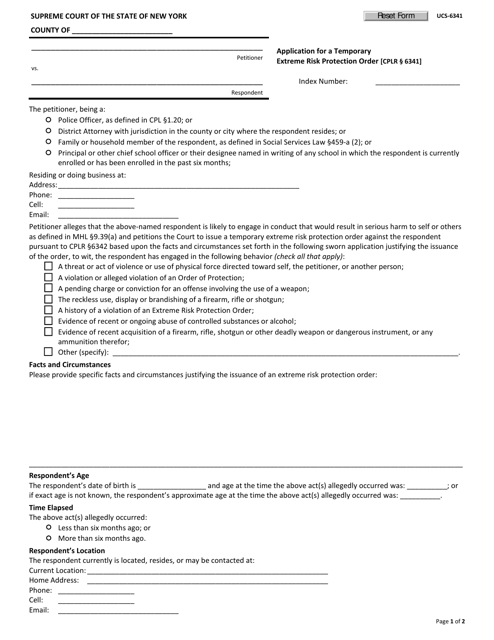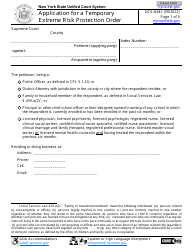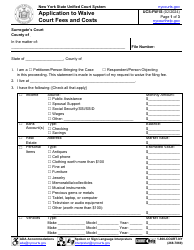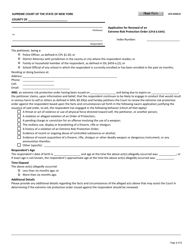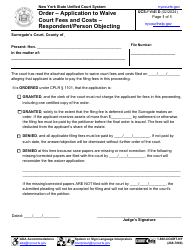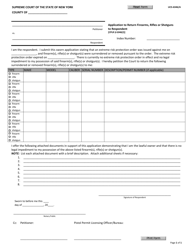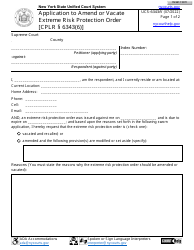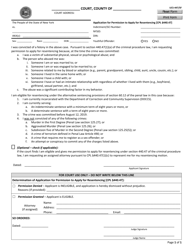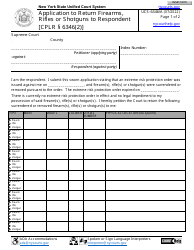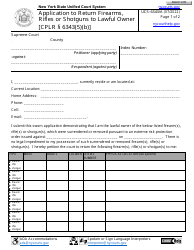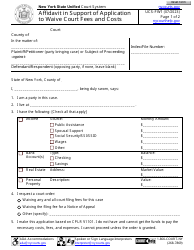This version of the form is not currently in use and is provided for reference only. Download this version of
Form UCS-6341
for the current year.
Form UCS-6341 Application for a Temporary Extreme Risk Protection Order - New York
What Is Form UCS-6341?
This is a legal form that was released by the New York Supreme Court - a government authority operating within New York. As of today, no separate filing guidelines for the form are provided by the issuing department.
FAQ
Q: What is UCS-6341?
A: UCS-6341 is the application form for a Temporary Extreme Risk Protection Order in New York.
Q: What is a Temporary Extreme Risk Protection Order?
A: A Temporary Extreme Risk Protection Order is a court order that temporarily removes firearms from an individual who poses a risk of harm to themselves or others.
Q: Who can apply for a Temporary Extreme Risk Protection Order?
A: Law enforcement officers or family or household members of a person who poses a risk can apply for a Temporary Extreme Risk Protection Order.
Q: How long does a Temporary Extreme Risk Protection Order last?
A: A Temporary Extreme Risk Protection Order can last up to 6 days, until a hearing can be held to determine if a final order should be issued.
Q: What happens after a Temporary Extreme Risk Protection Order is issued?
A: After a Temporary Extreme Risk Protection Order is issued, a hearing will be held to determine if a final order should be issued, which could last up to one year.
Q: Can a Temporary Extreme Risk Protection Order be renewed?
A: Yes, a Temporary Extreme Risk Protection Order can be renewed for additional one-year periods if the circumstances warrant it.
Q: What happens if someone violates a Temporary Extreme Risk Protection Order?
A: Violating a Temporary Extreme Risk Protection Order is a Class A misdemeanor, which can result in penalties such as imprisonment and fines.
Q: Is there a fee for filing the UCS-6341 application?
A: The filing fee for the UCS-6341 application may vary depending on the county in which it is filed.
Form Details:
- The latest edition provided by the New York Supreme Court;
- Easy to use and ready to print;
- Quick to customize;
- Compatible with most PDF-viewing applications;
- Fill out the form in our online filing application.
Download a fillable version of Form UCS-6341 by clicking the link below or browse more documents and templates provided by the New York Supreme Court.
